What Hi-Fi? Verdict
B&W’s new Zeppelin is talented sonically, but notable holes in the feature set and overall usability issues leave it just a shade below excellent
Pros
- +
Expansive open presentation
- +
Agile weighty bass
- +
Capable at high volumes
Cons
- -
Limited hi-res support
- -
No Chromecast or UPnP at the moment
Why you can trust What Hi-Fi?
In a world where upgrading to a newer smartphone every 12 months is de rigueur for the self-respecting and tech-savvy consumer, a six-year wait for a product can feel like a lifetime. But that’s how long it has taken Bowers & Wilkins to launch a brand-new iteration of its iconic, air-balloon-esque Zeppelin wireless speaker.
The brand-new (and suffix-free) Zeppelin marks a return to the speaker’s simplest and most effective moniker for its hotly anticipated 2021 rebirth, because these days, B&W is exclusively prioritising wireless streaming over physical connectivity. To this end, the Zeppelin is compatible with AirPlay 2, Spotify Connect and aptX Adaptive Bluetooth (a comparatively new codec that offers hi-res support and which B&W supports in its latest headphones), with Bowers & Wilkins Music App support also serving as a gateway to music streaming services including Tidal, Deezer, Qobuz, Soundcloud and TuneIn. Alexa voice control is now onboard for hands-free operation, too. Will the new Zeppelin take off? Seatbelts on, we’re cleared for launch.
Build
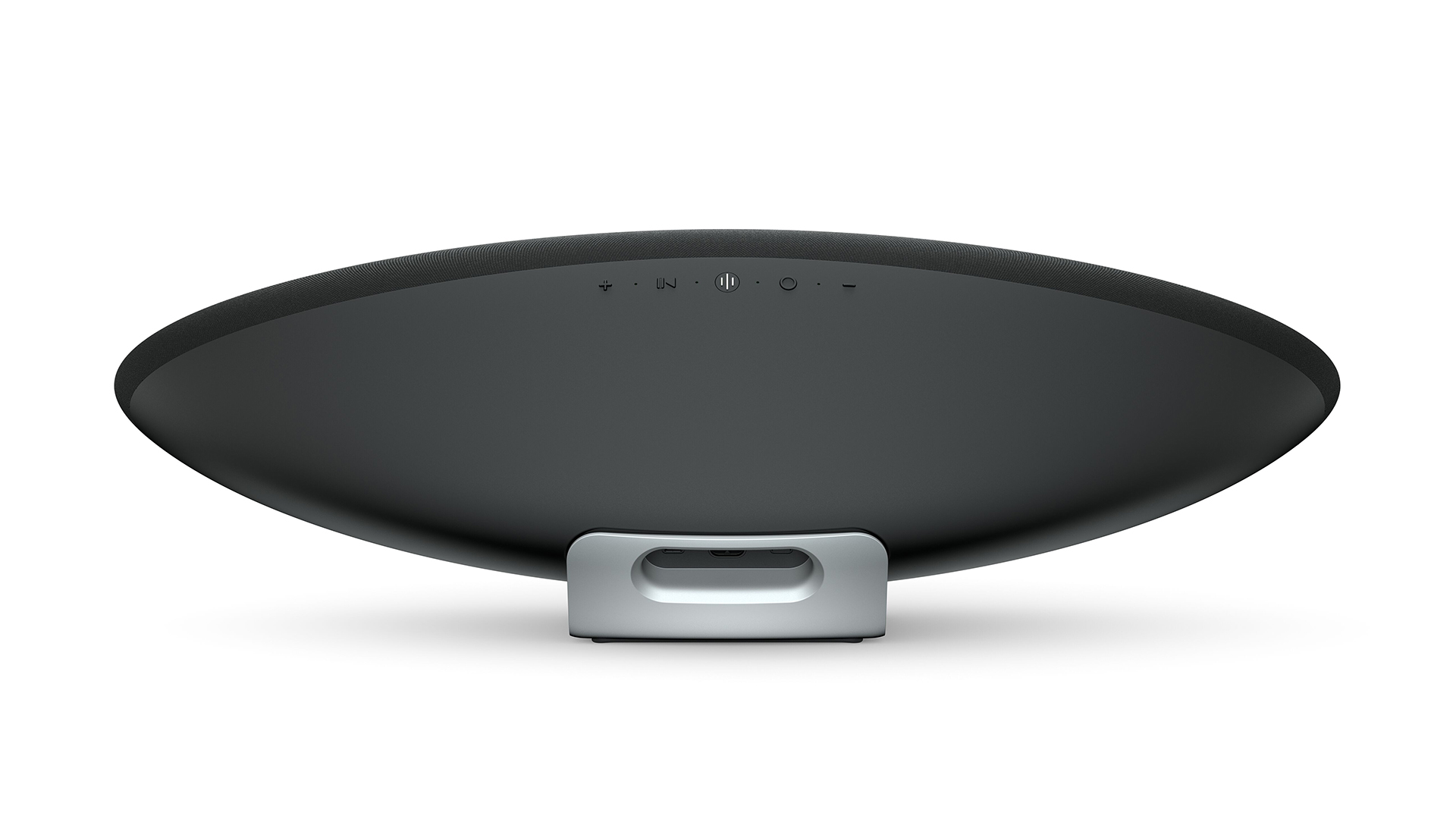
Following on from its Zeppelin Air and Zeppelin Wireless predecessors in 2011 and 2015 respectively (the original speaker predates those considerably though, with the inaugural 2007 model flying the flag for the then-popular iPod dock), the new Zeppelin has been built firmly with today's streaming age in mind. It is, says Bowers & Wilkins, the “smartest and most flexible Zeppelin” to date. Just in case it needs stating though, you won’t find any physical iPod dock here!
What you will find is 6.5kg of unashamedly extroverted elliptical speaker, with a fabric-clad grille that angles just slightly upwards. At 65cm across and 19cm deep, it’s about the size and weight of a fully-grown fox, if said fox was sleeping on your hi-fi shelf. To look at it face on, you’d think the Zeppelin was rugby-ball shaped or even true Zeppelin-shaped, but it’s actually more of a wedge, where the top of the plastic casework slopes down to meet the horizontal (if slightly curved) base, which sits on a strong metal pedestal stand.
At the back of the unit, built into the stand, you’ll find the power port (the speaker needs to be plugged into the mains to function), a USB-C for any software updates, and a reset button – although you will also find a factory-reset tab in the app. There are no other physical inputs.
The Zeppelin comes in two finishes – dark or light pearl grey. The dimmable ambient light that shines down from our darker midnight grey sample’s base to its pedestal creates the illusion that the speaker is levitating – yes, like an actual Zeppelin airship. Don’t like it? The light can be turned off entirely in the Bowers & Wilkins Music App, once you’ve set up the speaker using your device. That said, the Zeppelin is still a Marmite product, aesthetically speaking. It won’t blend in with your home decor; wherever we place it, it demands to be seen.
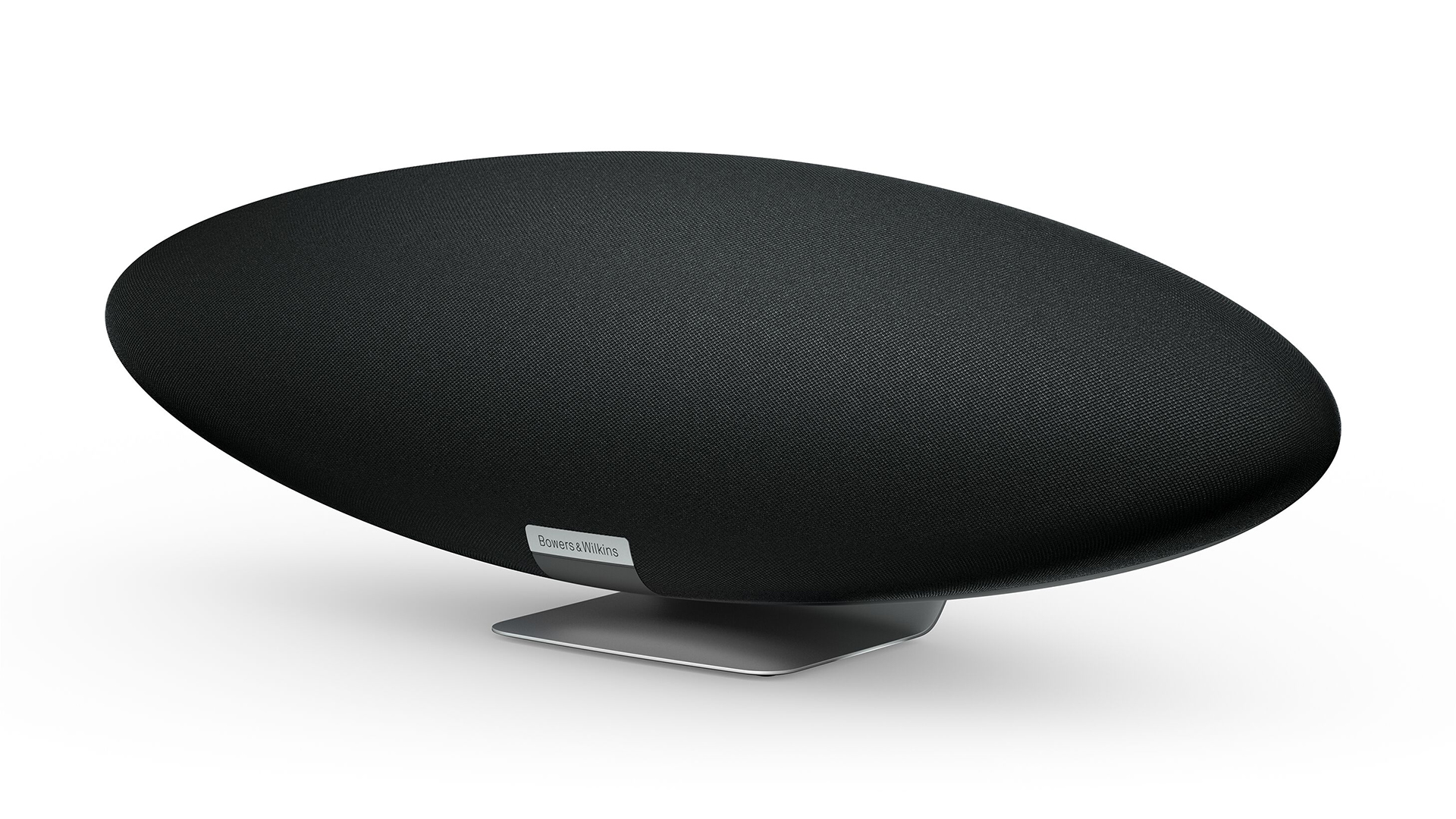
Finishes x2
Dimensions (hwd) 210 x 650 x 194mm
Weight 6.5kg
Bluetooth 5.0 with aptX Adaptive
AirPlay 2 Yes
Power output 240W
Connections USB-C (service only)
Under the fabric and matte plastic hood, B&W has implemented driver technologies from its stereo speakers into the Zep’s single chassis. Its speaker configuration comprises two 25mm Decoupled Double-Dome aluminium tweeters (as found in the heralded 600 Anniversary Series) as well as two 90mm midrange drivers that benefit from the proprietary Fixed Suspension Transducer (FST) technology used in the company's high-end floorstanders. A 150mm woofer has been mounted centrally at the heart of the Zeppelin’s structure and optimised to stop it from detrimentally vibrating the cabinet as it operates. These drivers are fed by 240W of amplification in total – not bad for any size of wireless speaker, although not quite as powerful as the Award-winning Naim Mu-So Qb 2nd Generation, which packs 300W.
Across the far elliptical edge of the Zeppelin you’ll find a line of buttons for volume and play/pause, a multi-function button bearing three vertical lines (which pulse yellow during setup, then blue, and glow red if you need to reset the speaker), and a circular button labelled with the Alexa logo. Press it for five seconds and an LED strip underneath the Bowers & Wilkins branding on the front of the Zeppelin glows red, to mute mic-pickup. These buttons work well but they are a little difficult to locate if the speaker is at waist height or above, meaning we often find ourselves tipping the whole thing on to the precarious edge of the stand to see them properly.
Features
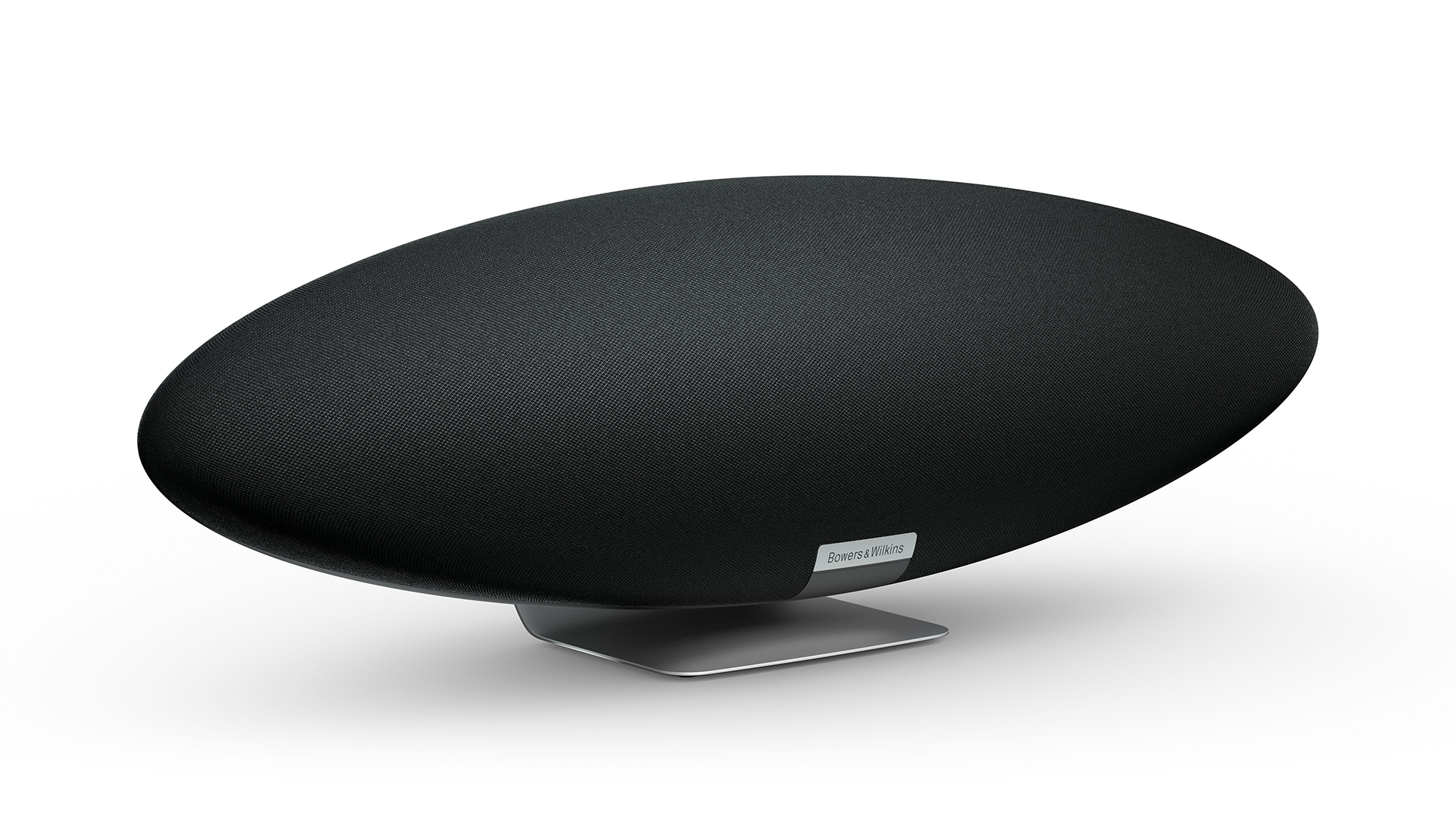
After downloading the B&W Music app, we are guided through the setup process, during which you’ll need your wi-fi password and to choose a suitable name for the Zeppelin (although whether ‘lounge’ could ever be preferable to ‘Zeppelin’ is for you to decide). It’s not the cakewalk we had anticipated, but eventually the app recognises the product we’re trying to set up and away we go.
One neat addition offered during the setup process is the chance to link our Deezer, Qobuz and Tidal memberships to B&W’s Music App. The Music app then corrals all of our playlists and recently played tracks here, to send over wi-fi to the Zeppelin. Here, you’ll also find B&W’s curated Zeppelin playlist, to showcase the speaker’s talents.
Multi-room functionality is on the menu thanks to AirPlay 2, but if you want to use the Zeppelin as an integral part of B&W’s Formation multi-room set-up, that will have to wait until a future update lands sometime in 2022.
You can tweak the Zeppelin’s treble and bass EQ levels too, should you want to, although for our testing proper we feel no need to do so and leave these at neutral.
Once Alexa has been set up through the B&W Music app (you’ll need to link an Amazon Alexa account) it works well and answers our questions promptly, although to play your desired music via voice commands you’ll need an Amazon Music account – ask Alexa to play your chosen artist on Tidal and she’ll tell you that your request is not supported.
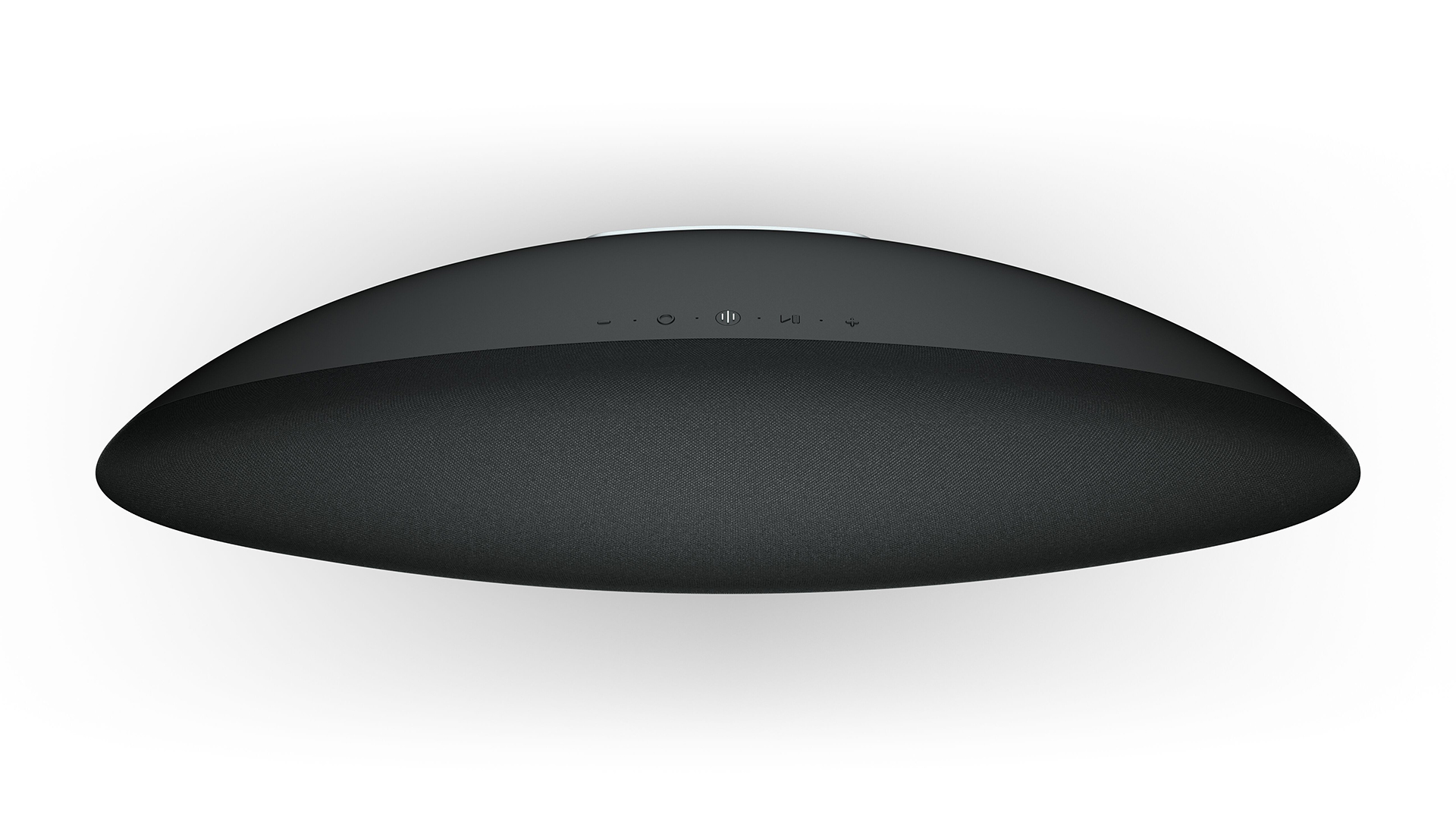
What you’re not getting is Chromecast or DLNA support – although B&W tells us an upgrade to add compatibility for the latter is in the pipeline. B&W has gone for Alexa and AirPlay 2 here, rather than Google Assistant and Chromecast – and if you’ve never used the last two before, you won’t miss them now. But if these features are important to you, it’s important to note that they’re unavailable here.
At the time of writing, Qobuz is also the only service offering better-than-CD hi-res audio streaming support for the Zeppelin. However, there is no limitation in the Zeppelin’s specification or firmware that stops Bowers & Wilkins offering other services in hi-res in the future – as long as these service providers approve and license the product. B&W assures us Amazon Music (which offers a hi-res tier) will soon be added, as will Tidal once the MQA license is approved. Bowers is one of the Spotify Hi-Fi launch partners, too.
As things currently stand, the Zeppelin promises much but has yet to deliver the fully-fledged, multi-source hi-res streaming and wireless compatibility feature-set that rivals can at this premium end of the market. That said, the watch word here is ‘yet’.
Sound
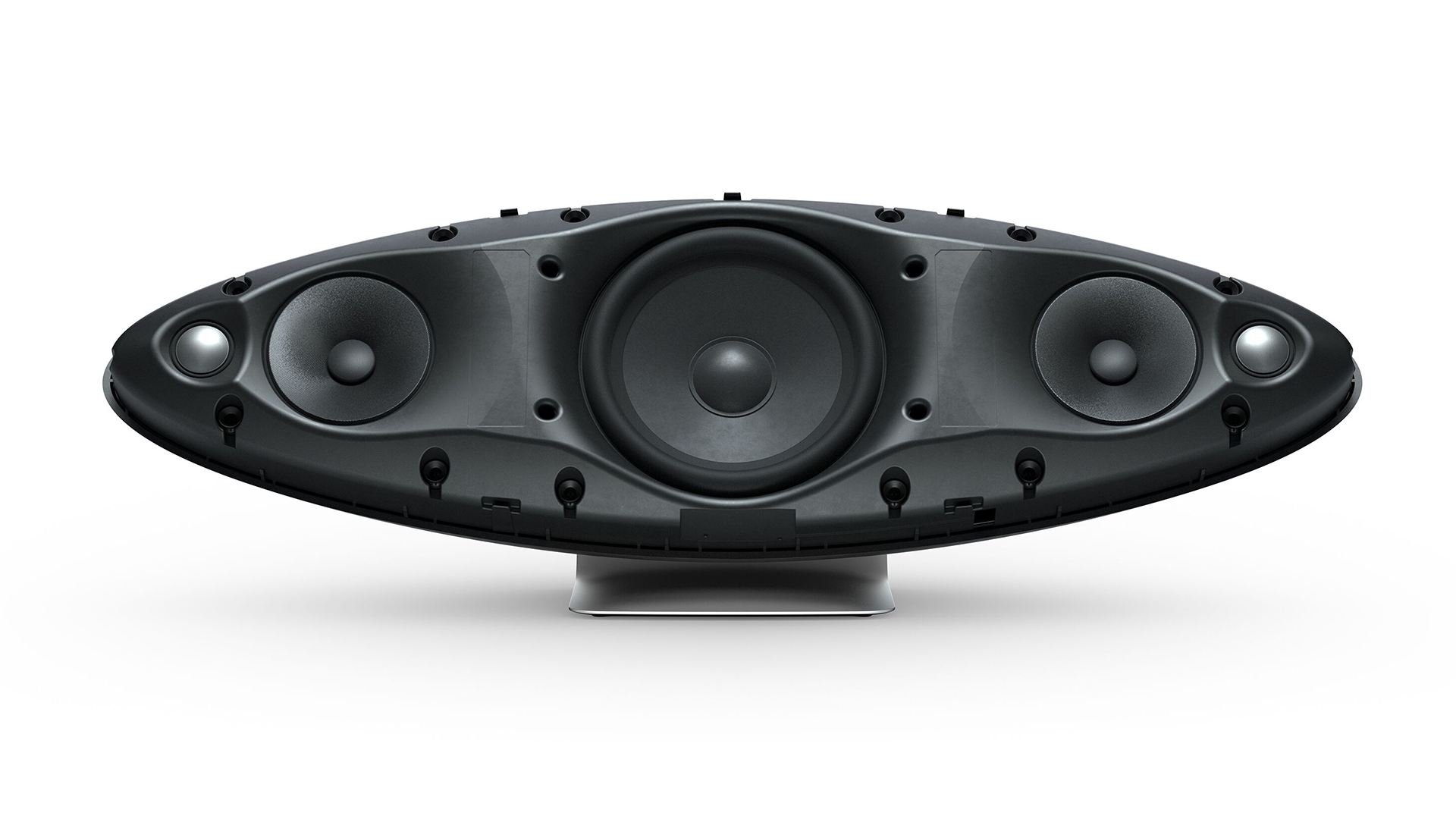
We cue up Can I Believe You by Fleet Foxes and the choral voices at the outset are nicely weighted, emotive and expansive. As the beat drops, strings are textured and drums feel three-dimensional in a surprisingly wide, spacious and, yes, room-filling soundstage.
In Shades Of Blue by Paul Weller, the tick-tocking of a carriage clock is crisp and well-placed, and the barking of a dog somewhere outside in Weller’s reverie is deftly handled. As an aeroplane takes off, it swoops across the speaker with greater weight and space through the bass than the rivalling, What Hi-Fi? Award-winning Naim Mu-So Qb 2nd Generation.
The Zeppelin delivers a pleasingly clear, full and broad presentation, but it is bettered for outright musicality. Across the course of our listening, vocals and other midrange elements can get slightly lost in the wider soundstage, and rhythmically this becomes a minor issue. Stream Flawless Remix by Beyoncé featuring Nicki Minaj, and Sasha Fierce’s "We flawless" at just over a minute into the track is more centrally placed and comes over with more bite and emotion when heard through the Naim Muso Qb2. This track features decelerating time signatures interspersed with driving beats from various instruments and vocals, and here the Qb Gen 2 delivers the sonic elements more convincingly as a cohesive whole.
That said, where the B&W comes up slightly short in terms of rhythmic cohesion and timing, it counters with bass power and expansiveness. If you prioritise a foot-tapping rhythm, you will favour the multi-Award-winning Naim. If you want a more open and spacious presentation with more muscular bass, the Zeppelin offers this.
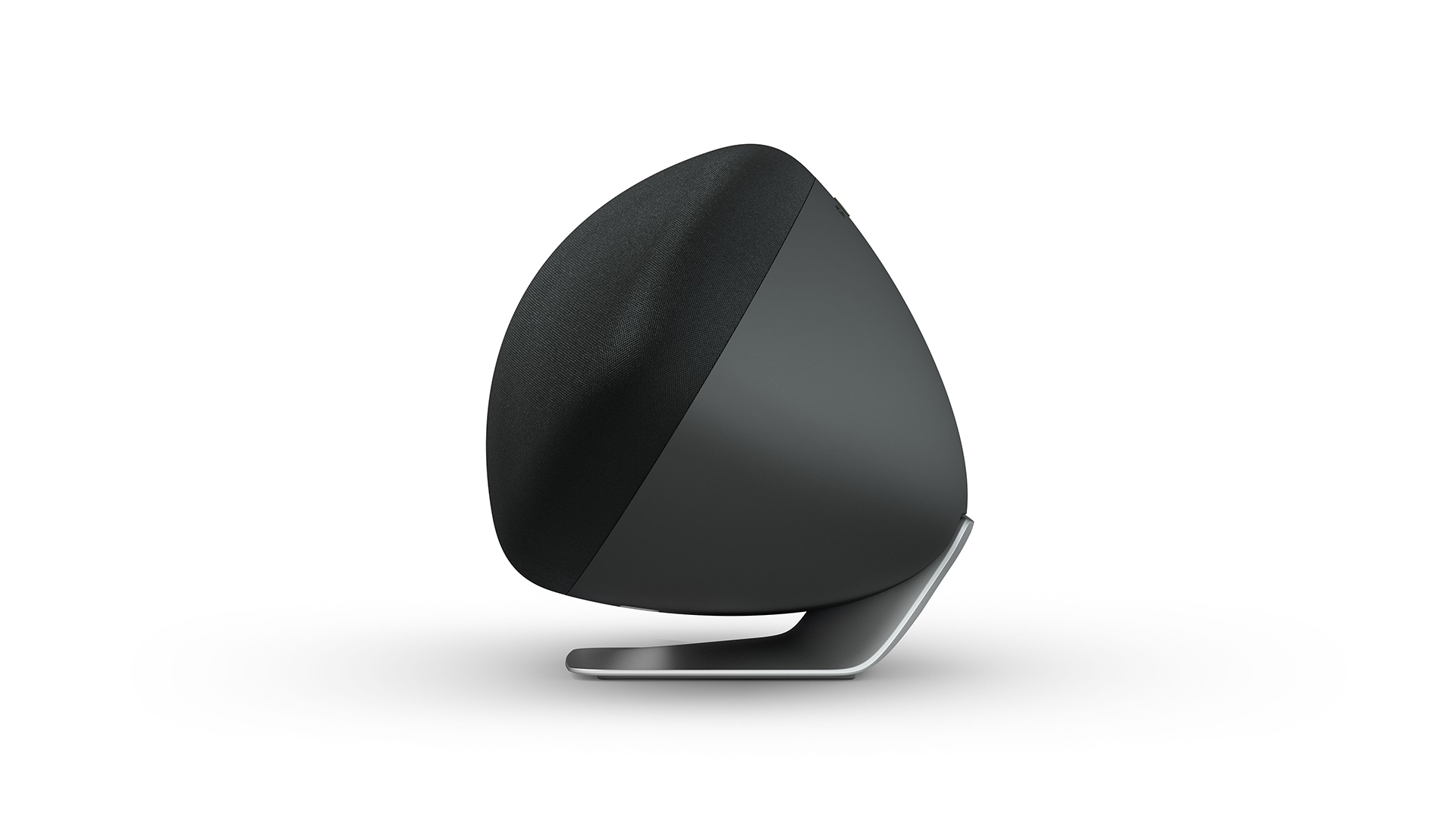
Verdict
The extroverted original was one of the stand-out wireless speakers of the noughties, and the newest Zeppelin still offers the kind of expansive sound that we can appreciate, with a zealous bass injection that stays grippy even at high volumes.
Ultimately, our omission of a fifth star doesn’t regard sound quality so much. In the crowded arena of today, the Zeppelin is currently missing a few key features, including Chromecast, MQA support, DLNA and UPnP that might allow us to fully recommend it. If, as is promised, some of these missing features are added in the future, the Zeppelin will look much more like the wireless speaker we’ve been waiting years for.
SCORES
- Sound 5
- Features 3
- Build 4
MORE:
Read our review of the Naim Mu-So Qb 2nd Gen
Read the newer B&W Zeppelin Pro Edition review
The best wireless speakers: wonderful wi-fi speakers for the home
What Hi-Fi?, founded in 1976, is the world's leading independent guide to buying and owning hi-fi and home entertainment products. Our comprehensive tests help you buy the very best for your money, with our advice sections giving you step-by-step information on how to get even more from your music and movies. Everything is tested by our dedicated team of in-house reviewers in our custom-built test rooms in London, Reading and Bath. Our coveted five-star rating and Awards are recognised all over the world as the ultimate seal of approval, so you can buy with absolute confidence.
-
bristollinnet Yet another 'brand' promising all sorts of firmware updates in the future. Until they arrive, it's all vapourware.Reply
My advice is if missing features such as MQA support is important to you, hold back from buying now and wait six months. If B&W can't sort out a licence by then you know they're (again) talking bollocks.

